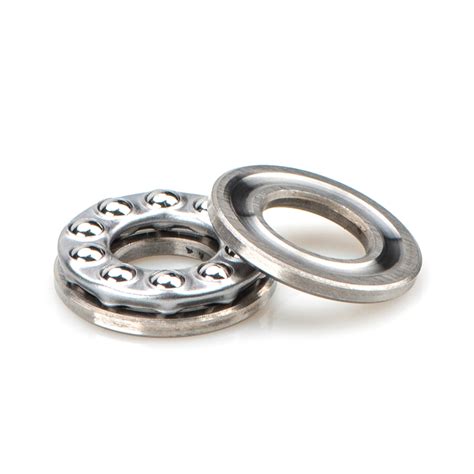Axial Bearings: A Comprehensive Guide to Design, Applications, and Benefits
Introduction
Axial bearings are specialized bearings designed to accommodate axial loads, which are forces applied parallel to the shaft axis. They play a crucial role in various industrial and commercial applications, ensuring smooth and reliable operation of rotating machinery. This comprehensive guide delves into the design, applications, benefits, and essential considerations of axial bearings.
Design and Types of Axial Bearings
Axial bearings consist of two primary components: a thrust washer and a thrust collar or thrust plate. The thrust washer is a flat ring with a spherical or conical surface that bears the axial load. The thrust collar or thrust plate, which is typically attached to the shaft, rotates against the thrust washer.
Based on their design, axial bearings are classified into three primary types:

1. Ball Thrust Bearings: Employ rows of ball bearings arranged between thrust washers. They offer high-speed operation and can handle moderate axial loads.

2. Roller Thrust Bearings: Feature cylindrical or tapered rollers between thrust washers. They are designed for heavy axial loads and have a higher load-carrying capacity than ball thrust bearings.
3. Hydrostatic Thrust Bearings: Utilize a thin film of pressurized lubricant to separate the thrust surfaces. They provide very high load capacities and low friction.
Applications of Axial Bearings
Axial bearings find widespread applications across various industries, including:
-
Machinery manufacturing: In gearboxes, pumps, compressors, and turbines
-
Aerospace: In aircraft engines and jet propulsion systems
-
Automotive: In transmissions, differentials, and driveshafts
-
Power generation: In wind turbines and hydroelectric generators
-
Robotics: In robotic joints and actuators
Benefits of Axial Bearings
The primary benefits of using axial bearings include:

-
Increased Load Capacity: They effectively bear axial loads, reducing wear and tear on other components.
-
Improved Efficiency: Axial bearings minimize friction, resulting in increased energy efficiency and reduced operating costs.
-
Extended Component Life: By absorbing axial forces, they protect other components from premature failure, extending their lifespan.
-
Smooth Operation: Axial bearings provide smooth and precise motion, reducing noise and vibration.
-
Compact Design: They are relatively compact, allowing for space optimization in machine designs.
Factors to Consider When Selecting Axial Bearings
Selecting the appropriate axial bearing for a specific application requires consideration of several factors:
-
Load Magnitude and Direction: Determine the maximum axial load and its direction.
-
Speed: Consider the operating speed of the bearing.
-
Temperature: The bearing must withstand the operating temperature range.
-
Lubrication: Choose a bearing that is compatible with the available lubricant.
-
Mounting Constraints: Ensure that the bearing can be mounted within the available space and meet alignment requirements.
Strategies for Maximizing Axial Bearing Performance
To enhance the performance and longevity of axial bearings, consider the following strategies:
-
Proper Lubrication: Use the recommended lubricant and ensure adequate lubrication to reduce friction and wear.
-
Appropriate Preload: Apply the correct preload to minimize axial displacement and prevent brinelling.
-
Regular Maintenance: Conduct periodic inspections and maintenance to detect and address any potential issues early on.
-
Alignment Accuracy: Ensure precise alignment of the bearing to prevent excessive stress and premature failure.
-
Environmental Protection: Shield the bearing from contaminants, moisture, and excessive temperature fluctuations.
Comparing Radial and Axial Bearings
While radial bearings are designed to accommodate radial loads (perpendicular to the shaft axis), axial bearings handle axial loads.
Pros of Radial Bearings:
- Versatile and suitable for a wide range of applications.
- Can handle both radial and axial loads (to a limited extent).
Cons of Radial Bearings:
- Limited axial load capacity compared to axial bearings.
- Can be more expensive due to their complex design.
Pros of Axial Bearings:
- High axial load capacity.
- Smooth operation and low friction.
- Relatively compact design.
Cons of Axial Bearings:

- Less versatile than radial bearings.
- Not suitable for applications with significant radial loads.
Tables
Table 1: Axial Bearing Types and Characteristics
| Type |
Load Capacity |
Speed |
Friction |
| Ball Thrust |
Moderate |
High |
Low |
| Roller Thrust |
Heavy |
Medium |
Moderate |
| Hydrostatic Thrust |
Very High |
Very Low |
Negligible |
Table 2: Applications of Axial Bearings
| Industry |
Application |
| Machinery |
Gearboxes, pumps, compressors, turbines |
| Aerospace |
Aircraft engines, jet propulsion systems |
| Automotive |
Transmissions, differentials, driveshafts |
| Power Generation |
Wind turbines, hydroelectric generators |
| Robotics |
Robotic joints, actuators |
Table 3: Factors to Consider When Selecting Axial Bearings
| Factor |
Importance |
| Load Magnitude and Direction |
Determines the bearing size and capacity. |
| Speed |
Affects the bearing material and lubrication requirements. |
| Temperature |
Influences the bearing materials and operating range. |
| Lubrication |
Ensures smooth operation and reduces wear. |
| Mounting Constraints |
Dictates the bearing dimensions and mounting options. |
Call to Action
For expert advice on axial bearing selection and application, consult with a reputable bearing manufacturer or distributor. By carefully considering the factors outlined above, you can optimize the performance and longevity of your axial bearings, ensuring reliable and efficient operation of your machinery.

